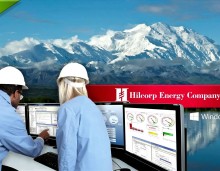Carl Sagan on Space Implications for Science and the Environment (1993)
Sagan’s ability to convey his ideas allowed many people to understand the cosmos better—simultaneously emphasizing the value and worthiness of the human race, and the relative insignificance of the Earth in comparison to the Universe. He delivered the 1977 series of Royal Institution Christmas Lectures in London.[22] He hosted and, with Ann Druyan, co-wrote and co-produced the highly popular thirteen-part Public Broadcasting Service (PBS) television series Cosmos: A Personal Voyage modeled on Jacob Bronowski’s The Ascent of Man.
Cosmos covered a wide range of scientific subjects including the origin of life and a perspective of our place in the Universe. The series was first broadcast by the PBS in 1980, winning an Emmy[23] and a Peabody Award. It has been broadcast in more than 60 countries and seen by over 500 million people,[3][24] making it the most widely watched PBS program in history.[25] In addition, Time magazine ran a cover story about Sagan soon after the show broadcast, referring to him as “creator, chief writer and host-narrator of the new public television series Cosmos, [and] takes the controls of his fantasy spaceship”.[26]
Sagan was a proponent of the search for extraterrestrial life. He urged the scientific community to listen with radio telescopes for signals from potential intelligent extraterrestrial life-forms. Sagan was so persuasive that by 1982 he was able to get a petition advocating SETI published in the journal Science and signed by 70 scientists including seven Nobel Prize winners. This was a tremendous increase in the respectability of this controversial field. Sagan also helped Frank Drake write the Arecibo message, a radio message beamed into space from the Arecibo radio telescope on November 16, 1974, aimed at informing potential extraterrestrials about Earth.
Sagan was chief technology officer of the professional planetary research journal Icarus for twelve years. He co-founded The Planetary Society, the largest space-interest group in the world, with over 100,000 members in more than 149 countries, and was a member of the SETI Institute Board of Trustees. Sagan served as Chairman of the Division for Planetary Science of the American Astronomical Society, as President of the Planetology Section of the American Geophysical Union, and as Chairman of the Astronomy Section of the American Association for the Advancement of Science (AAAS).
At the height of the Cold War, Sagan became involved in public awareness efforts for the effects of nuclear war when a mathematical climate model suggested that a substantial nuclear exchange could upset the delicate balance of life on Earth. He was one of five authors — the “S” — of the “TTAPS” report, as the research paper came to be known. He eventually co-authored the scientific paper hypothesizing a global nuclear winter following nuclear war.[27] He also co-authored the book A Path Where No Man Thought: Nuclear Winter and the End of the Arms Race, a comprehensive examination of the phenomenon of nuclear winter.
Sagan also wrote books to popularize science, such as Cosmos, which reflected and expanded upon some of the themes of A Personal Voyage and became the best-selling science book ever published in English;[28] The Dragons of Eden: Speculations on the Evolution of Human Intelligence, which won a Pulitzer Prize; and Broca’s Brain: Reflections on the Romance of Science. Sagan also wrote the best-selling science fiction novel Contact in 1985, based on a film treatment he wrote with his wife in 1979, but he did not live to see the book’s 1997 motion picture adaptation, which starred Jodie Foster and won the 1998 Hugo Award for Best Dramatic Presentation.
http://en.wikipedia.org/wiki/Carl_sagan
source

